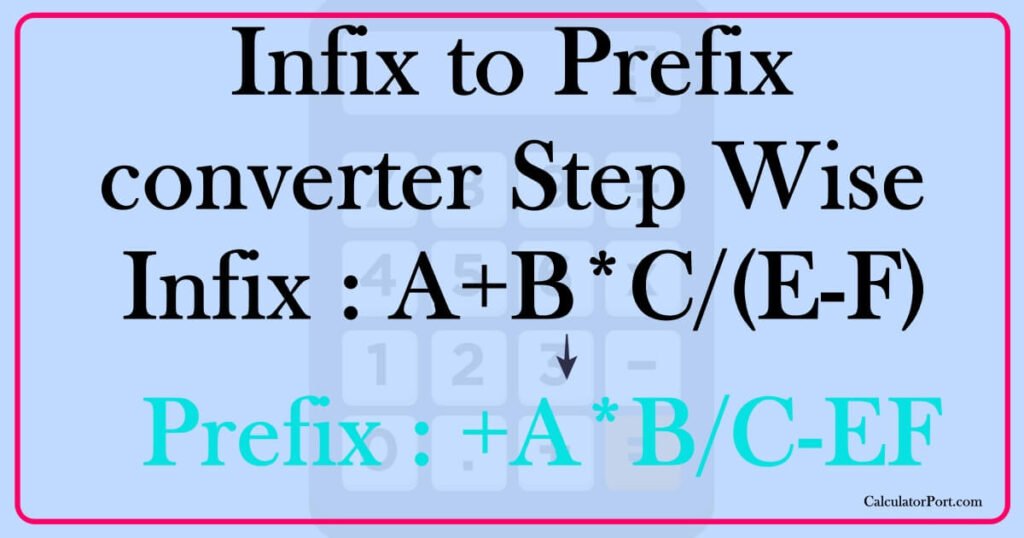Prefix to infix converter
Prefix:
Infix:
| Input String | Prefix Expression | Stack (Infix) |
|---|
A prefix expression is a type of arithmetic expression in which the operator symbols come before the operands (numbers). For example, the prefix expression “+ 2 3” means “add 2 and 3.”
On the other hand, an infix expression is a type of arithmetic expression that is written using the standard notation for operators (e.g. “*” for multiplication, “+” for addition). The same expression “+ 2 3” would be written as “2 + 3” in infix notation.
To convert a prefix expression to an infix expression, you can use the following steps:
- Create an empty stack
- Start scanning the prefix expression from right to left
- If the current character is an operand, push it onto the stack
- If the current character is an operator, pop two operands from the stack, put the operator between them, and push the result back onto the stack
- Repeat steps 2-4 until you have scanned the entire expression
- The result will be the top element on the stack, which is the infix expression
Alternatively, you can use an online prefix to infix converter tool to do the conversion for you. There are many such tools available on the internet, such as this one: https://calculatorport.com/prefix-to-infix-online-converter/
To use this tool, enter the prefix expression in the input field and click the “Convert” button. The tool will automatically convert the prefix expression to an infix expression and display the result.


